2011-2016
Too Big to Fail
Wall text, 2011
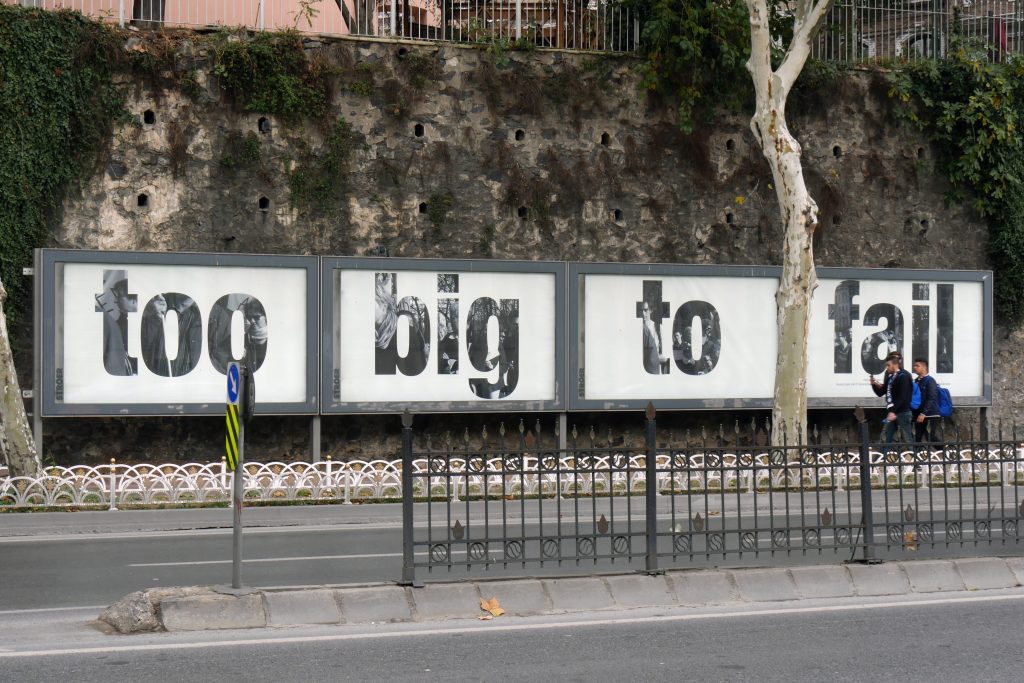
“Too big to fail” is how politicians assess major banks during economic crises and why they claim that banks should be bailed out through public money. Banks are regarded as essential to the system; their poor performance can endanger the entire capitalist system.
In the piece “Too Big to Fail”, the four words “too big to fail” are installed on a long wall. The text’s letters consist of a photo showing people at a demonstration organized on March 28, 2009 in numerous cities around the world. The protestors marched under the common slogan: “We will not pay for your crisis!” The demonstrations opposed a massive redistribution of public resources from the bottom to the top, as practiced by the nation states in their alleged attempts to manage the crises. While governments assisted banks with billions, they took money away from the majority of working people. In contrast to banks, no rescue plans focus on people with financial problems and in poverty; their misery and discontent do not threaten the system.
“Too Big to Fail” creates an image of the desire that the global movement for a democratic transformation becomes system-relevant, no longer ignored by those in power.


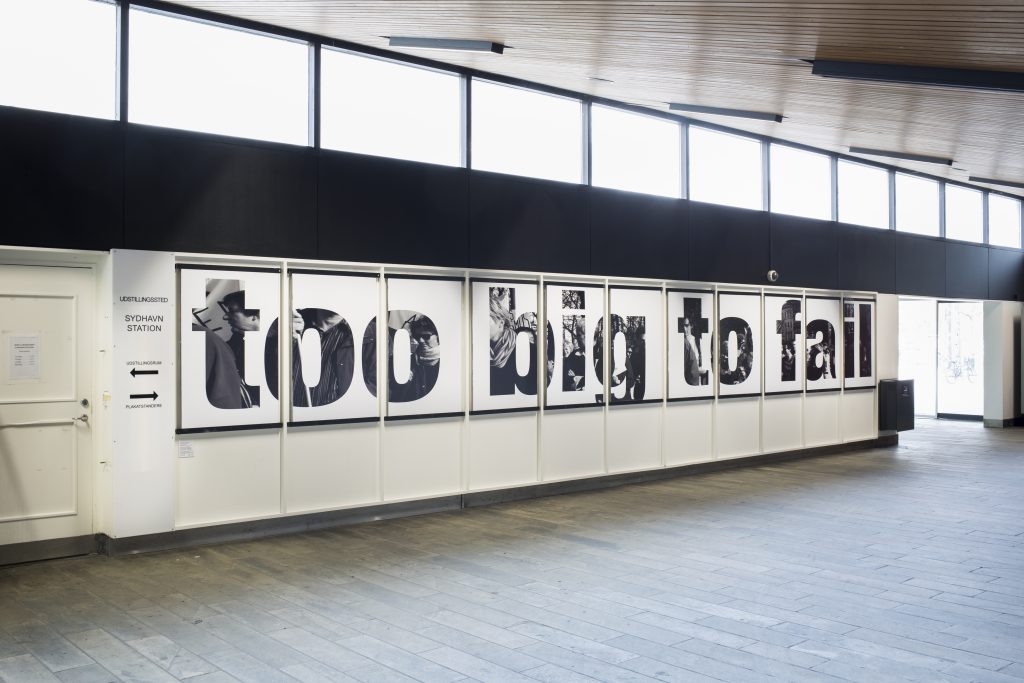
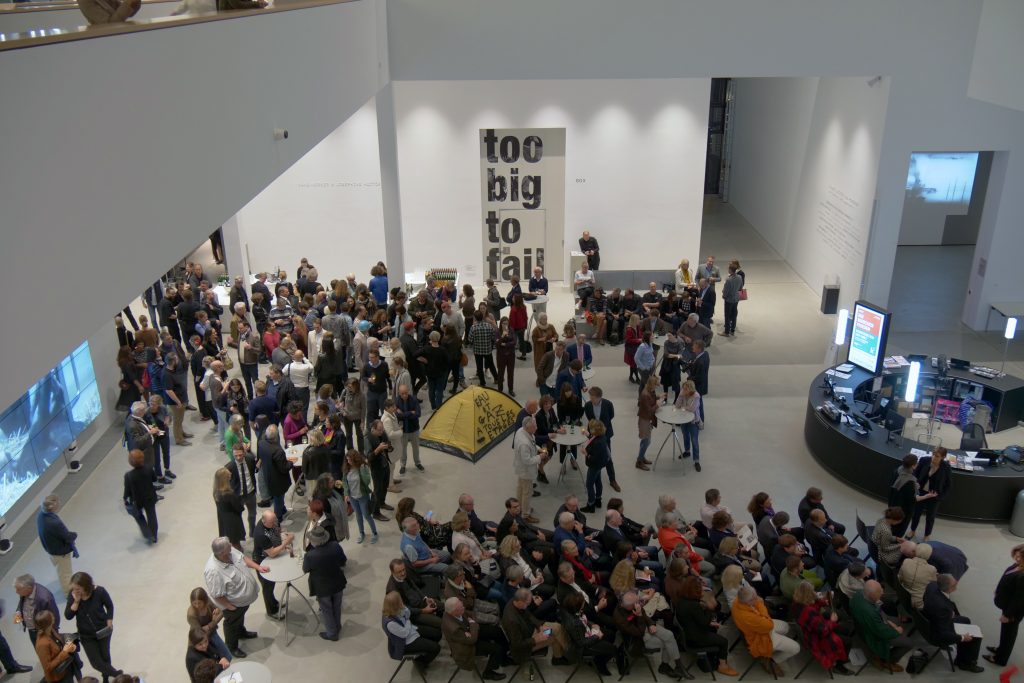
Elections are a Con
Wall text, 2011

The slogan “elections are a con” (Elections piège à cons) was coined in May 1968 in Paris. It seems to have regained a special importance during these times of financial and economic crisis. In recent decades, the system of representative democracy has become less and less responsive to the interests of the electorate, but instead primarily oriented to the interests of banks, corporations and the rich.
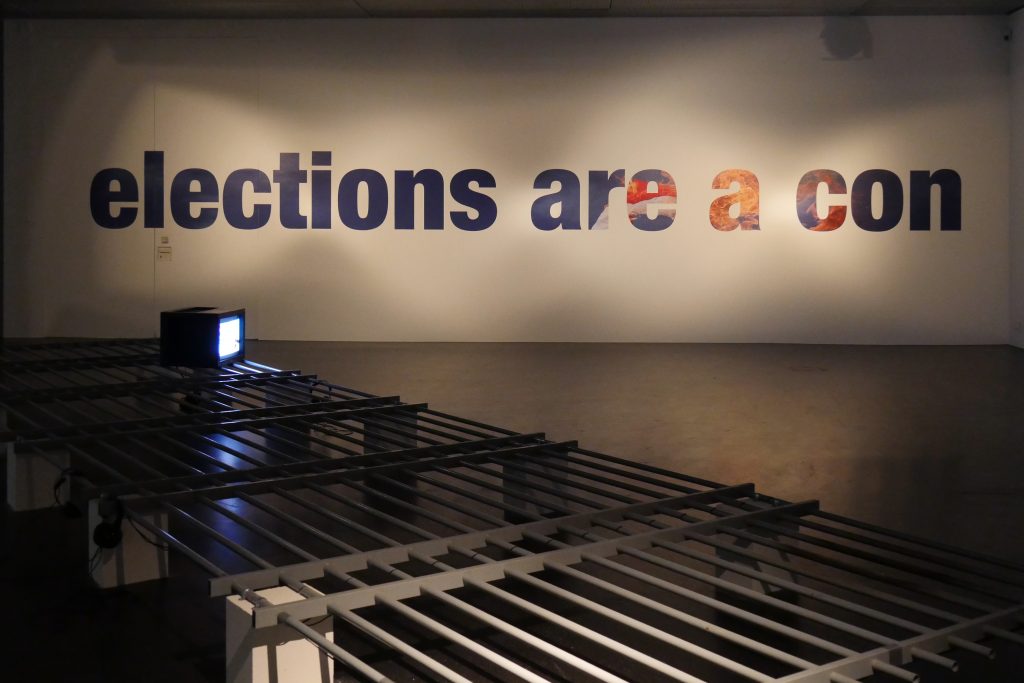
Walden Bello notes that Western democracy is an ideal situation to ensure the continuance of the elites’ power, because it allows elites to contest with each other, while at the same time shutting out the dispossessed, the impoverished and workers, while paradoxically offering them the illusion of having a participation in the political process. (1) In this system, elections have mutated into a meaningless ritual, while self-appointed political and economic elites make the real decisions away from public debates. The political scientist Colin Crouch uses the concept of post-democracy to characterize this condition. The citizen no longer is sovereign, but instead someone who must comply with the specific requirements of the global markets. Instead of supposed free choice, one has no choice at all.
For most people, the crisis has made this shift in political power visible for the first time. The philosopher Alain Badiou’s comments on May 68 also seem to apply to the present day: “It then became clear to everyone that the electoral dispositif is not just, or even primarily, a representative dispositif: It is also a dispositif that represses movements, anything that is new, and anything that tries to break away from it.”(2)
(1) Cf. David McNeill in the 8-channel video installation What Is Democracy? by O. Ressler, 2009
(2) Alain Badiou, The Communist Hypothesis. London, New York: Verso, 2010, p. 56
No replastering, the structure is rotten
Wall text, 2013
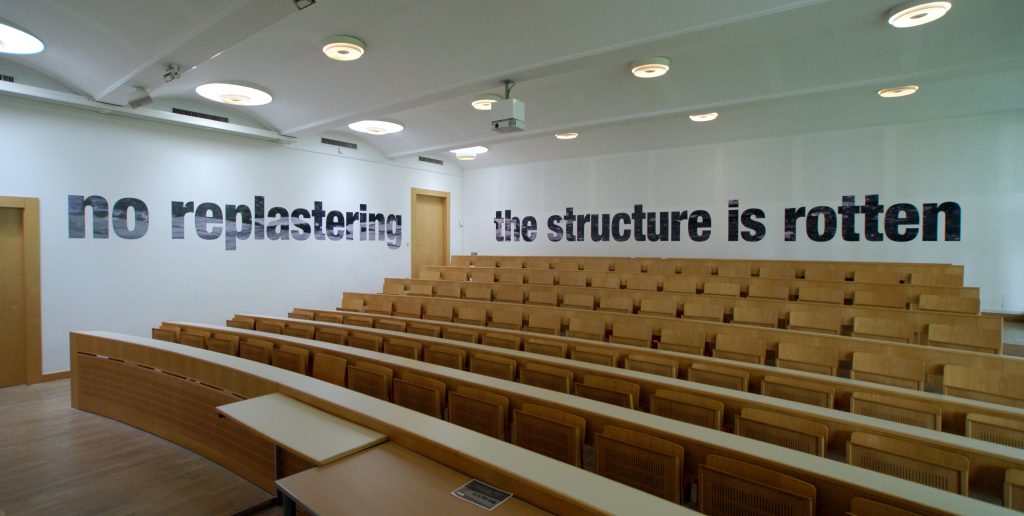
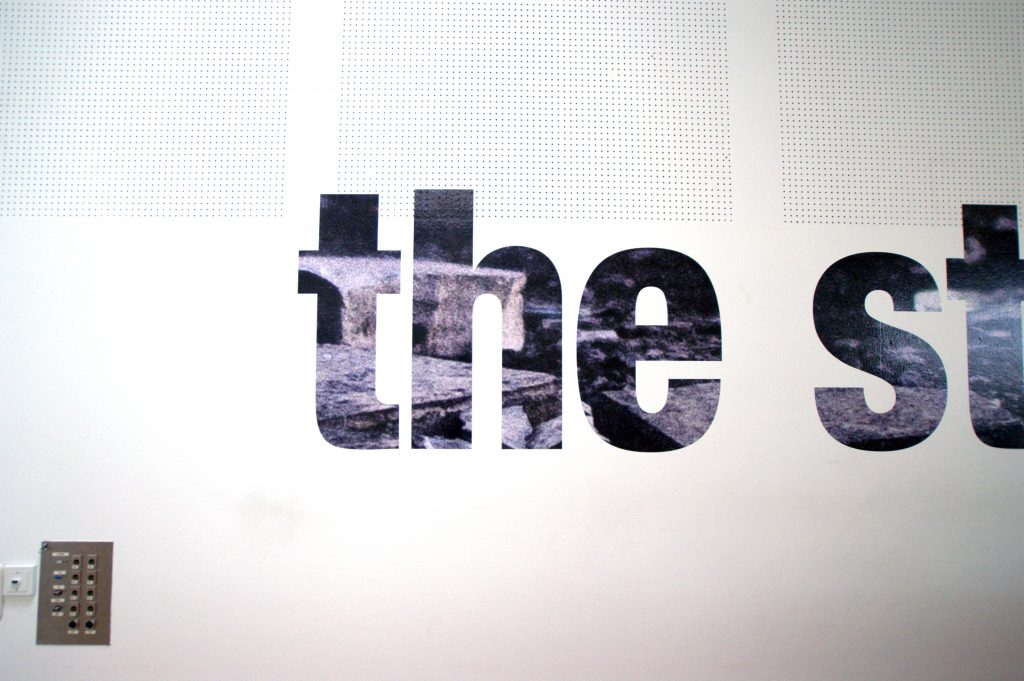
The 14-meter long wall text “No replastering, the structure is rotten” is a special commission for the main auditorium of the Catholic-Theological Private University of Linz, Austria, an initiative from the Institute for History and Theory of Art and Philosophy.
Displayed across two large walls in the auditorium, the text “no replastering, the structure is rotten” refers to a slogan used in the May 1968 revolts in Paris. The font is based on a large-scale photograph showing cobblestones, which were pulled out of the street during social unrest. While this particular photograph was taken in Athens in 2012, when Greece teetered at the brink of the economic and social collapse, the presentation of the piece elsewhere suggests, that in times of the financialization of capitalism “Greece” can happen everywhere. Presenting this historical slogan today, it can be read in relation to the deep structural crisis of capitalism and representative democracy, which affects university education as well as other realms.
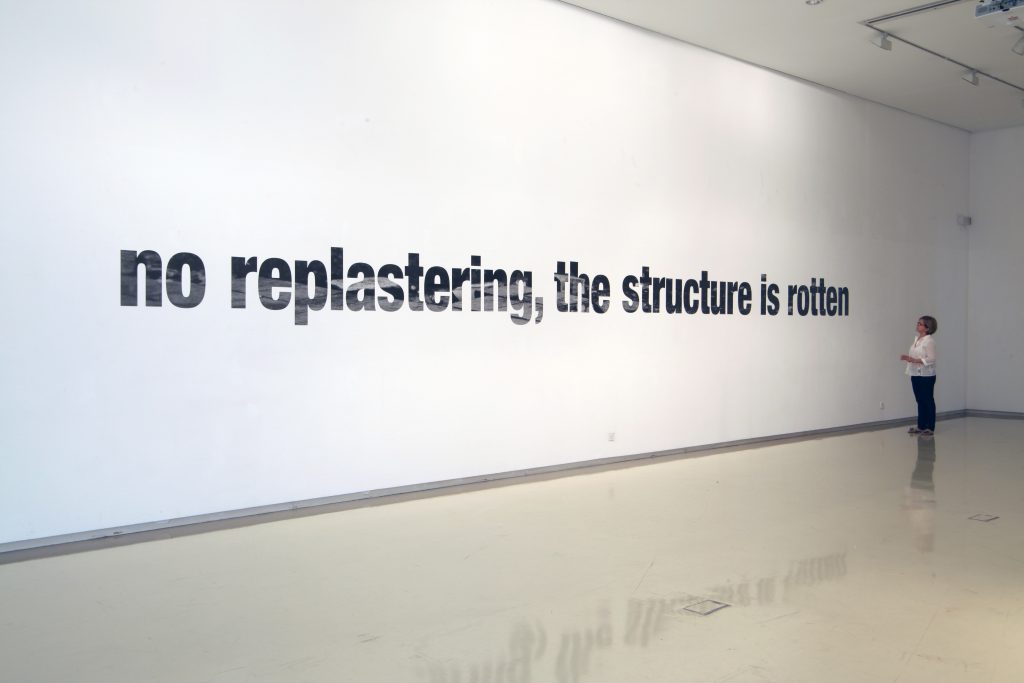
Property is Theft
Wall text, 2014
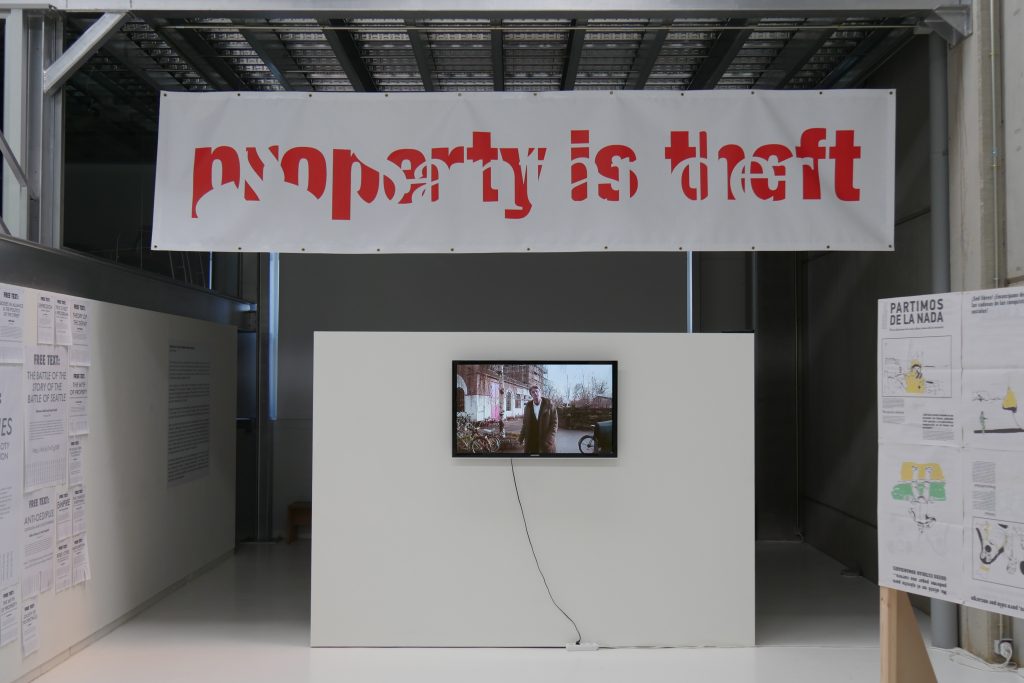
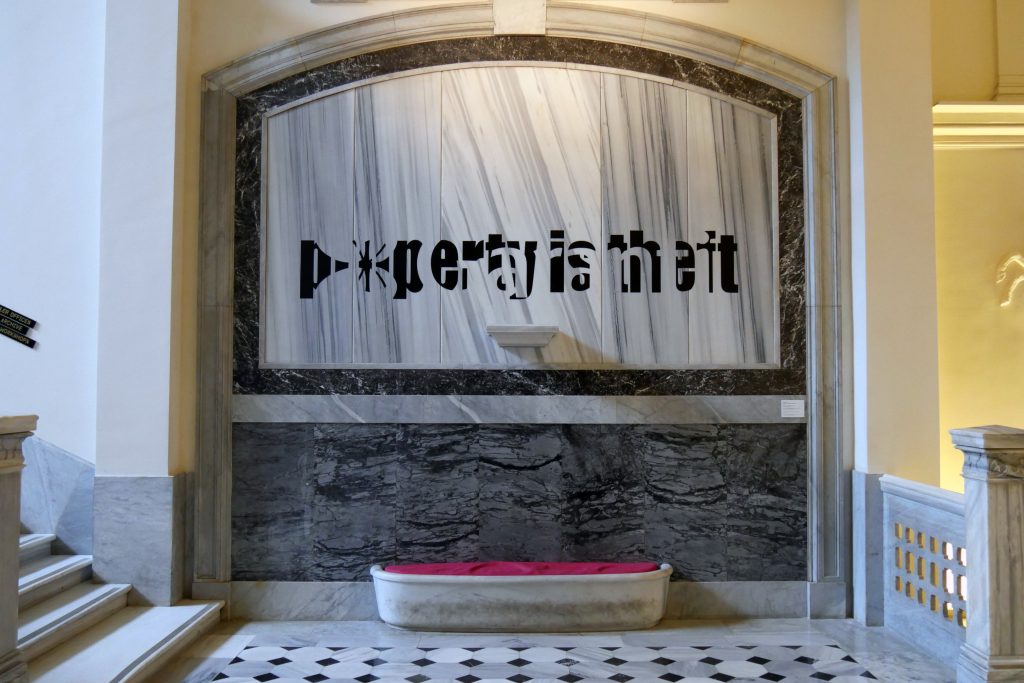
The slogan “property is theft” comes from a book by French anarchist Pierre-Joseph Proudhon from 1840. Proudhon opposed unused land being regarded as property, believing that land can only be rightfully possessed by use, while he considered the result of an individual’s labor a legitimate form of property. Today’s “accumulation by dispossession”, a form of appropriation that involves not primarily the generation of wealth but rather taking possession of existing wealth, usually from the poor or the public sector, makes this slogan a perfect candidate for re-use in the context of global capitalism.
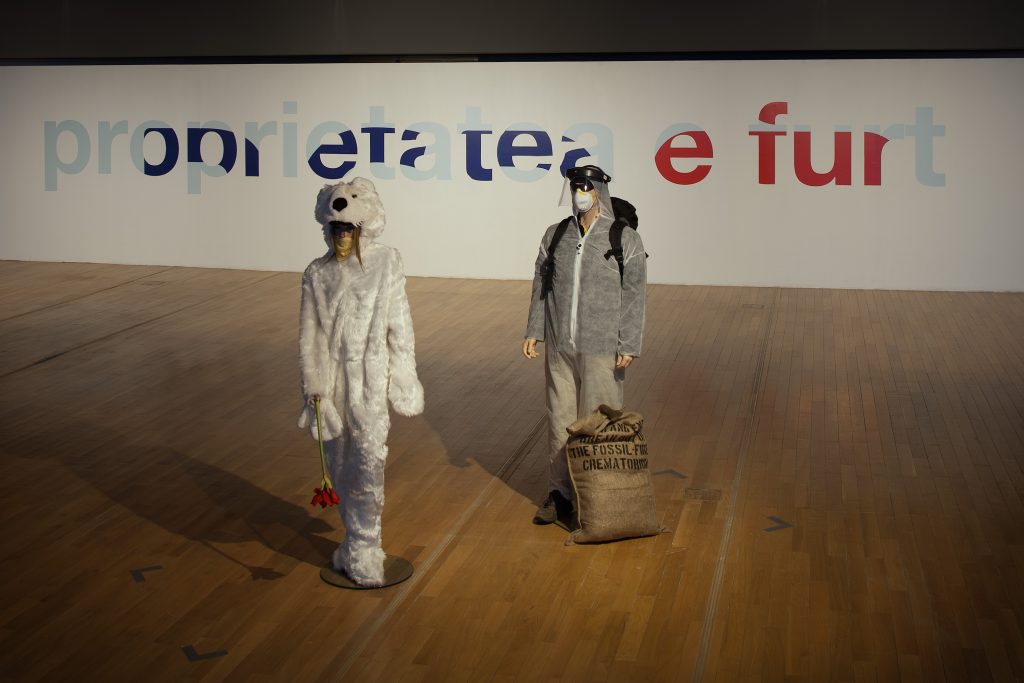
The text “property is theft” consists of the logo of Spain’s largest bank Santander, pointing to the bank as a central profiteer of the eviction of ten-thousands of mortgage holders who cannot pay the mortgages on their homes.
